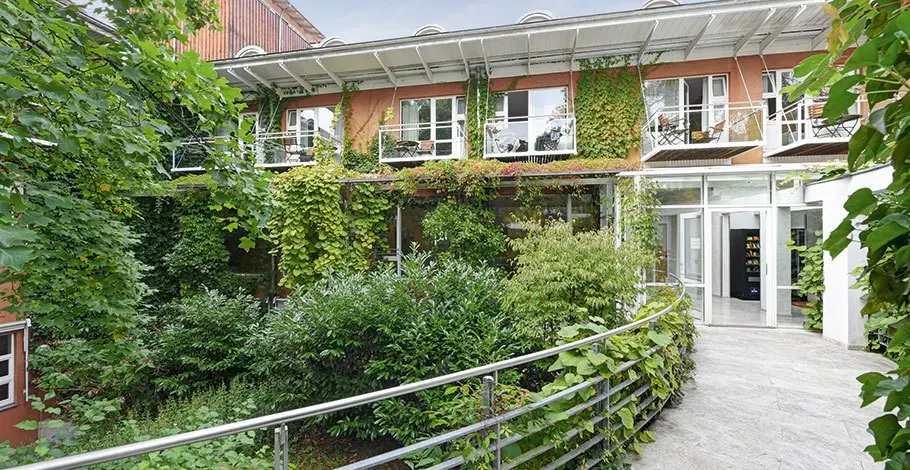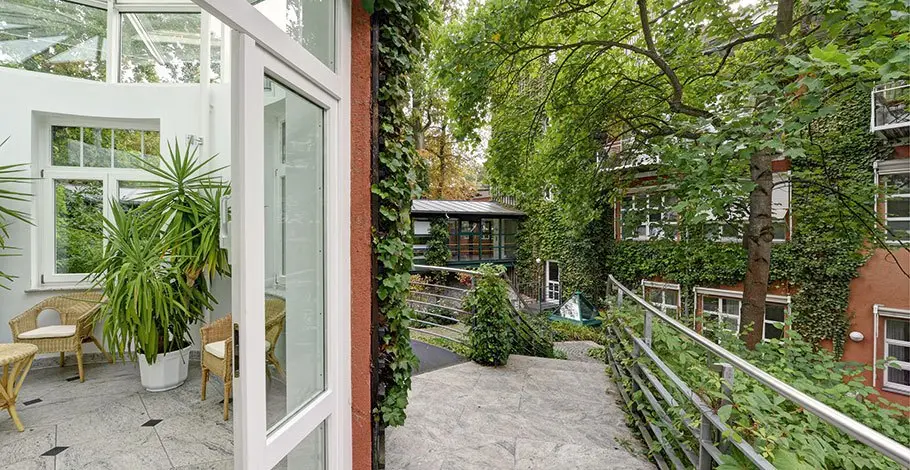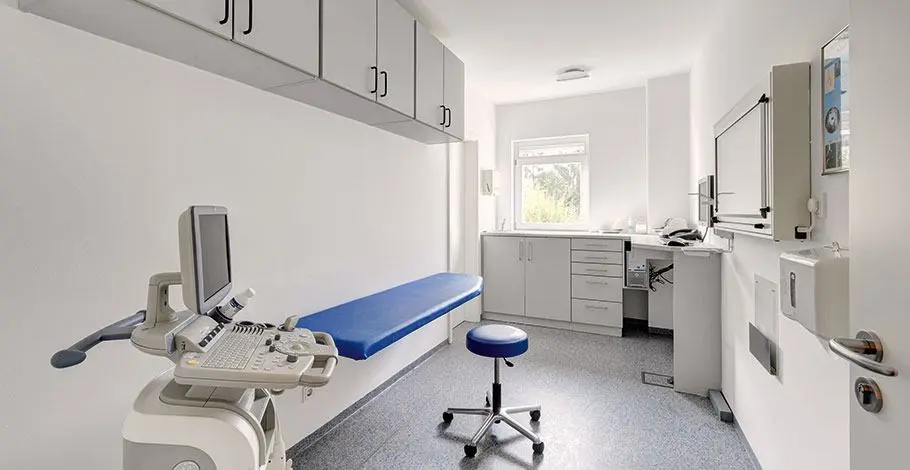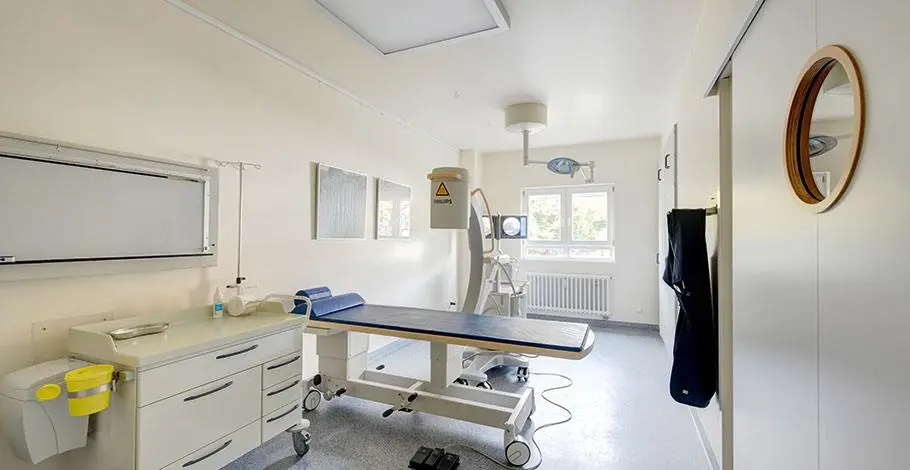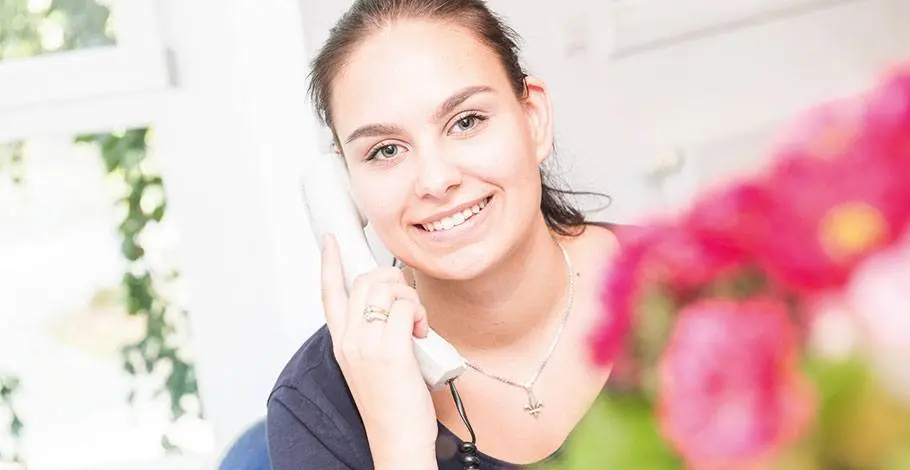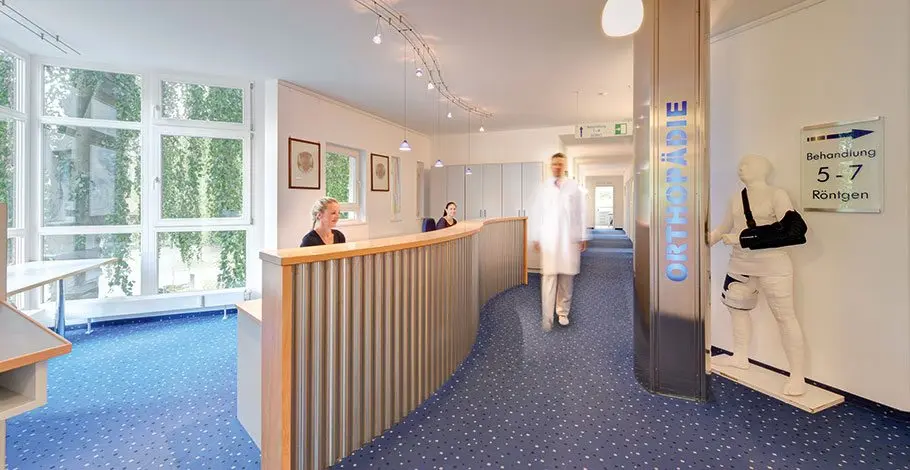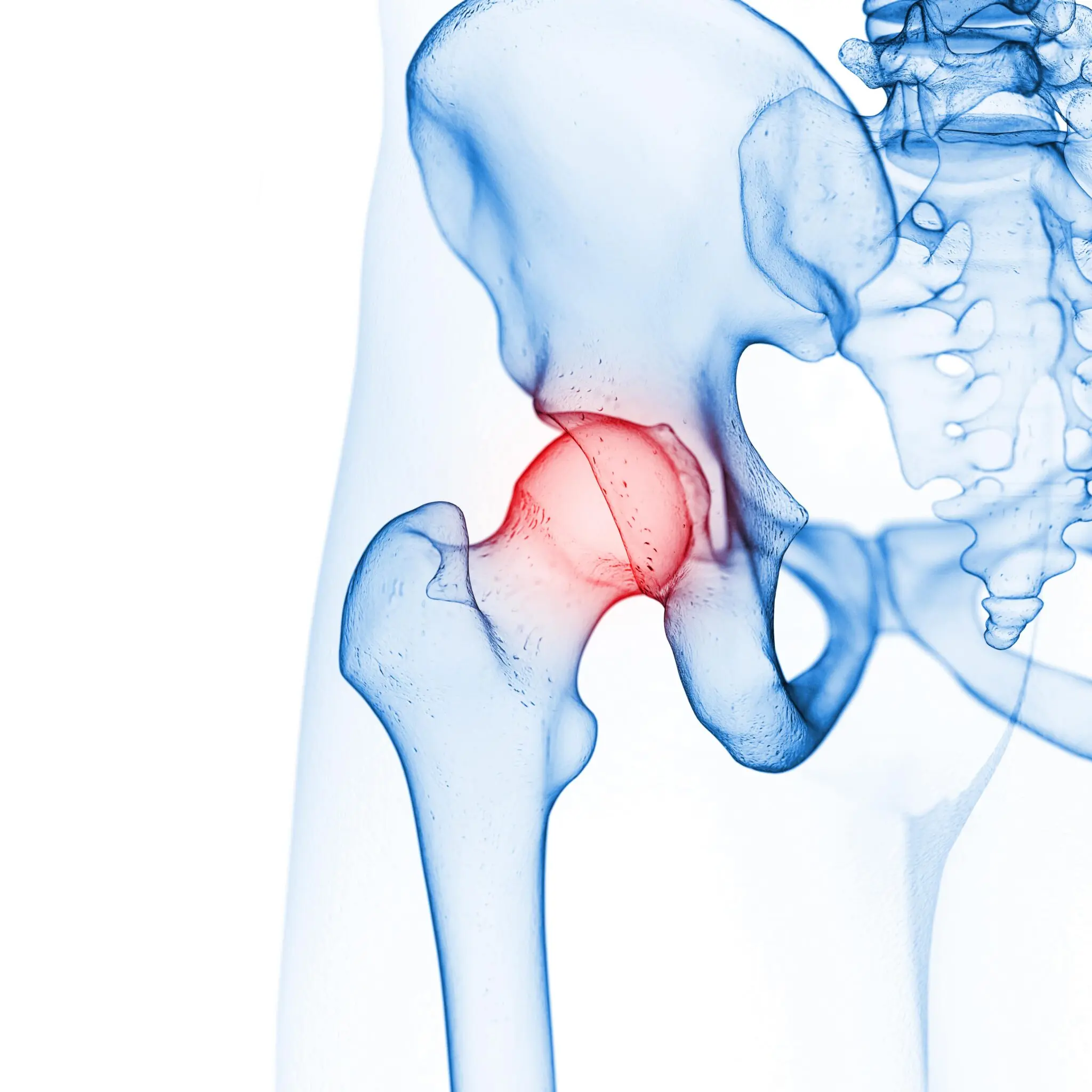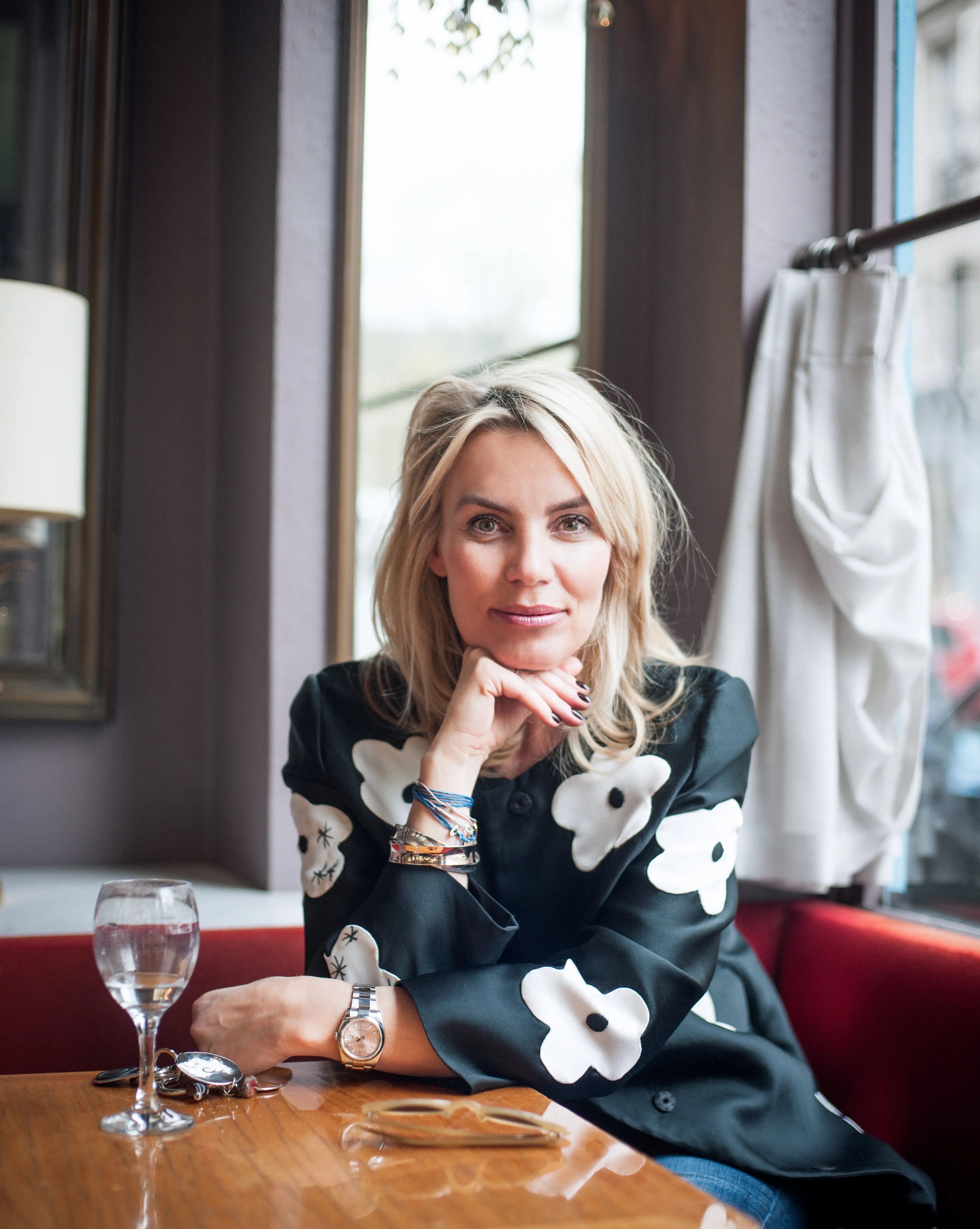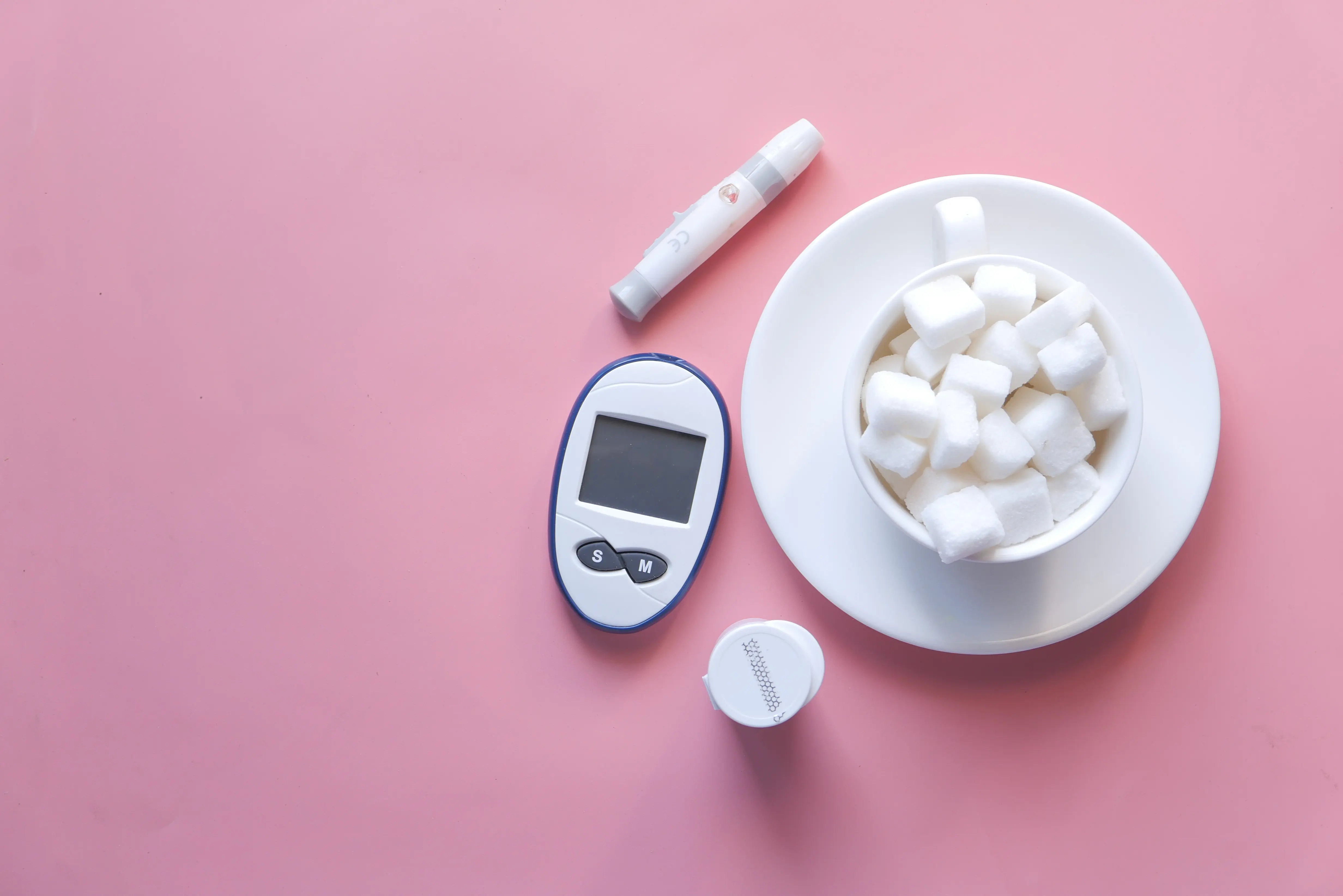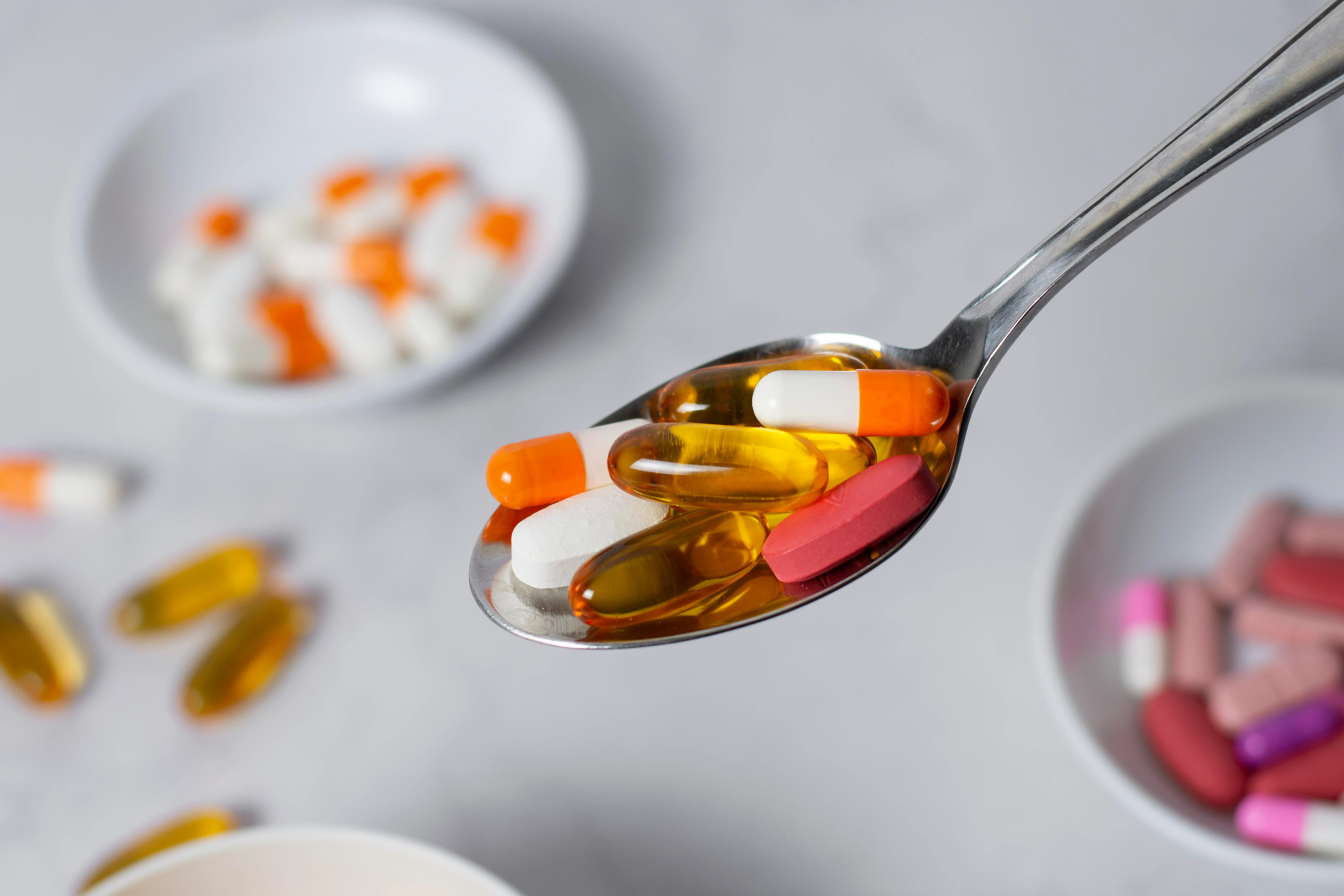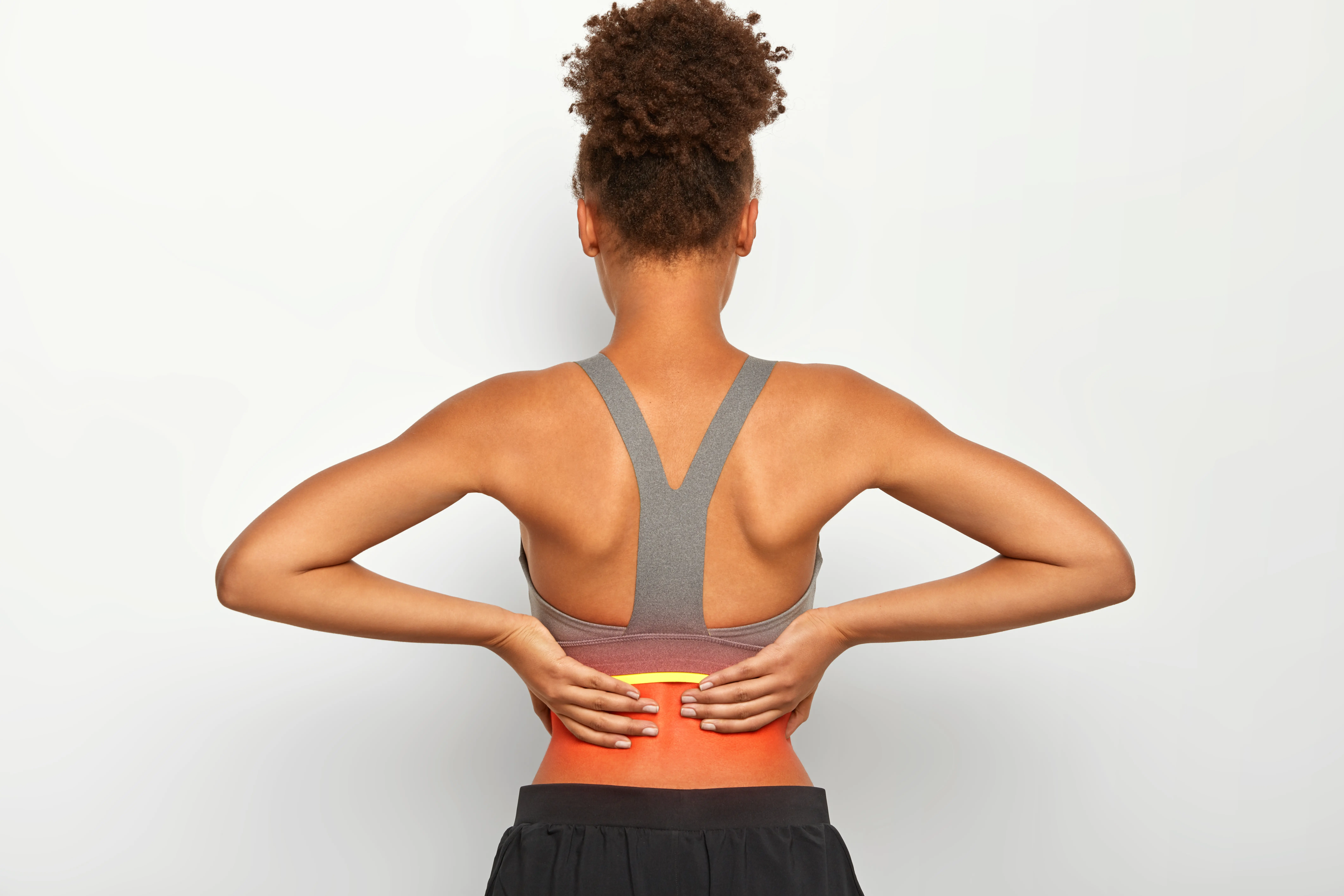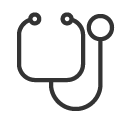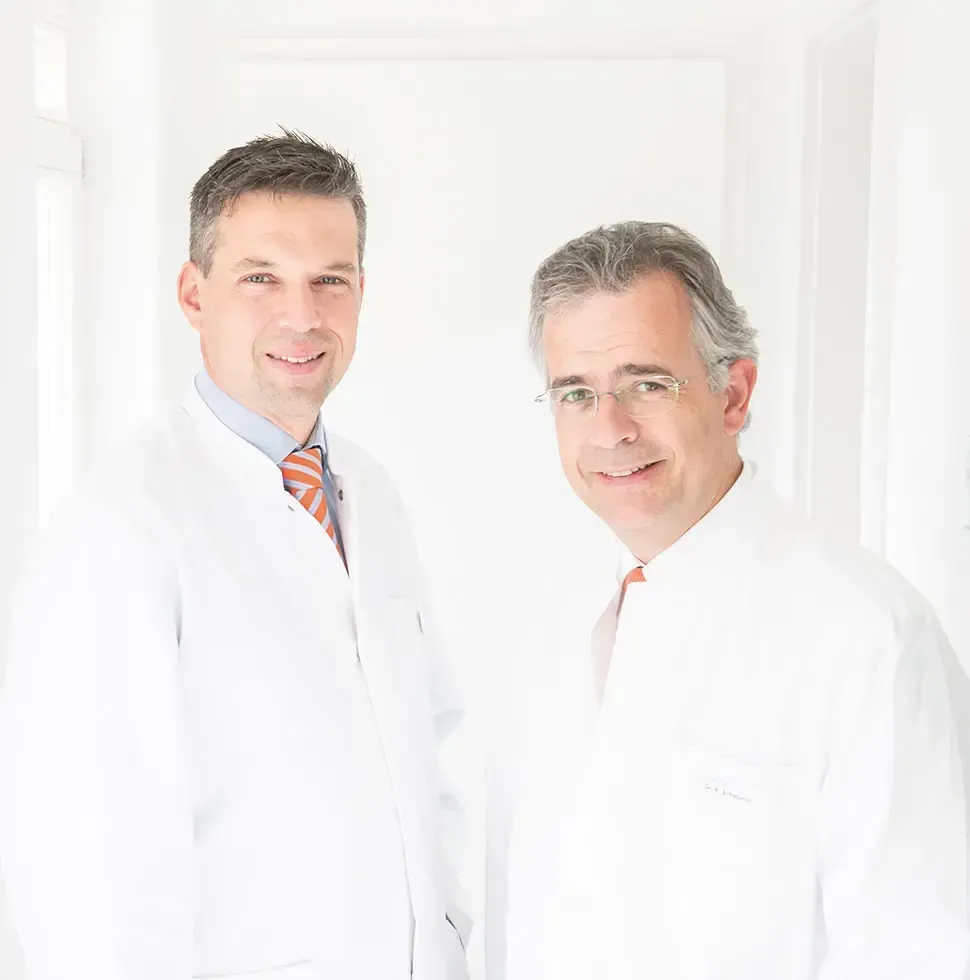
- München & Umgebung
- Innovative Orthopedics & Sports Orthopedics
Dr. med. Konrad Scheuerer, Dr. med. Ulrich Bader
OrthoPraxis Gräfelfing
Services
Successful dual leadership
At the western outskirts of Munich, in the middle of the green district of Gräfelfing, lies the Orthopraxis Gräfelfing. Here, Dr. Konrad Scheuerer and Dr. Ulrich Bader have been successfully caring for their patients together for over 20 years and manage with about 1000 inserted hip– and knee joints per year one of the largest endoprosthetics centers providing maximum care in Munich.
Particularly Gentle Surgery for Artificial Hip Joint
Beyond Munich's borders, specialists Scheuerer and Bader are known for a particularly gentle surgical technique for the insertion of artificial hip joints: the so-called Yale technique. It was developed in the late 1990s by the American orthopedic surgeon Jack Irving from the renowned Yale University in New Haven, Connecticut. The doctors of the OrthoPraxis brought the Yale technique back from a study visit to the USA in 2003 and have since used it for more than 10,000 hip implants.
But what makes this technique so special? "Clearly, it's the unique incision technique," explains Scheuerer. To get the optimal view of the joint, surgeons make two mini-incisions. The front is used to insert the cup. The rear serves the placement of the stem. "This method allows me a very good view of the surgical area to optimally place the prosthetic components. Additionally, I don't need X-ray fluoroscopy during the surgery to accurately position the joint," says Scheuerer.
Other positive side effects: The load-bearing tissue structures – such as muscles – remain intact, there is less bleeding, patients experience less pain, and recover faster. "As a result, physically active people can significantly shorten postoperative rehabilitation and return to their daily lives more quickly." Studies have also shown that the strength development of the hip muscles is better shortly after the operation with the Yale technique than after conventional access. "After more than 20 years of experience with this technique, it is also clear that the method has a positive effect on the overall outcome in the long term," says the experienced orthopedist.
"By consistently preserving the hip-stabilizing muscle groups with the Yale technique, patients can immediately put weight on their new joint."
Regarding the implants used, the surgeons of OrthoPraxis rely exclusively on proven implants. "Modern titanium prostheses with pairing made of ultra-hard ceramics and highly cross-linked plastics can often be expected to last more than 20 years," explains Scheuerer's partner Ulrich Bader. Together, the orthopedists see themselves as a team that benefits from each other: They operate at an excellent level and have a colleague by their side with whom they can exchange, consult, and expand joint expertise. "Our orthopedics practice stands for excellent treatment, rapid, pain-free recovery, and particularly personal care," Bader summarizes. No wonder patients from all over the world come to Gräfelfing, one of the few practices in Germany offering the Yale method.
In addition to the artificial hip joint, the two committed doctors are also the perfect contacts when it comes to the placement of artificial knee joints. Here they only use established joint prostheses, which still function well in over 90% of cases after 15 years. Unlike other orthopedic procedures, minimally invasive techniques prove ineffective due to the anatomical conditions of the knee joint. To still achieve as rapid and pain-free a recovery as possible, Dr. Scheuerer and Dr. Bader rely on the expertise of their anesthesiological colleagues, who apply very effective regional anesthesia techniques.
"The close follow-up care of the prosthesis by the operating doctor is very important to us."
Replacement of artificial joints is also standard
As a certified maximum care endoprosthetic center, the team regularly performs replacement surgeries following aseptic loosening and replaces infected joints in addition to the initial placement of artificial joints. For optimal infection surgery, the two doctors cooperate with a renowned laboratory in Hamburg: "The microbiologists there advise us on the choice of the right antibiotic and wound management," explains Bader. As a result, the use of antibiotics at the OrthoPraxis has significantly reduced over the past five years. The reason? Medications are dosed individually for each patient and need. Modern hygiene standards also help to further reduce the risk of infection: Laminar-flow technology is used in all operating rooms for all procedures. All process workflows are, of course, standardized by modern certification procedures.
Optimal follow-up care after joint implantation
What the surgeons of the OrthoPraxis are particularly concerned about is the personal follow-up care of the patients. "This is particularly important three months after the operation," explains Bader, "because then the patients are allowed to increase their activities with the operated joint again. We want to experience this time together with the patients and support them successfully and safely on their way." Continuous patient care was established by Scheuerer when he co-founded the OrthoPraxis in 1998 after several years of working as a senior physician at the Red Cross Hospital in Munich.
"Even during my studies, it was clear to me that I would become an orthopedist," says the now 57-year-old. "The precision, the angles and degrees of movement, the predictability in endoprosthetics have always fascinated me." Therefore, as a young man, he ended his music studies in favor of medicine, but he never gave up music: To this day, Scheuerer plays the trombone in various doctors' orchestras - "A wonderful balance to endoprosthetics."
